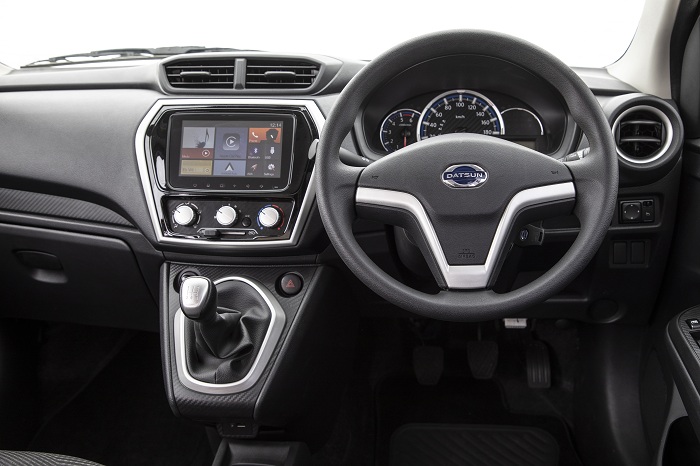The sales hit loathed by many
Revived in 2012 as a low cost marque, the brainchild of then Renault-Nissan Alliance CEO Carlos Ghosn drew the ire from the local media when it launched the Go two years later, as it lacked any essential safety equipment in addition to being rather sparsely equipped.
Of course, this, along with a shocking zero star Global NCAP crash rating, made no difference to budget conscious or first time buyers, as the Go become an instant hit with 24 949 units finding new homes across South Africa, in addition to the 4 160 seven-seat Go+ models sold here since 2016.
Despite the addition of a single airbag last year and discontinuing of all models lacking safety gear, the Go failed to make any sort of amendments to its reputation among media scribes even after its truly awful Indian assembled sibling arrived.
Now though, Datsun has introduced the updated Go and Go+ models with not only a full array of new features, but most crucially, a complete clutch of safety systems that conforms to the absolute minimum required of any new vehicle sold in the country.
More to show
On the outside, identifying the revised the Go from its sibling does not take a keen eye, with the updates consisting out of redesigned bumpers, a new honeycomb grille and for the flagship Lux model, rather sporty looking 14-inch alloy wheels, a tachometer and daytime running LEDs. A full set of accessories, including bigger 15-inch alloys, side skirts and a rear boot spoiler, are also offered.

The biggest change to the Go is inside though, where Datsun has replaced the bench seat and umbrella-style handbrake for a more conventional seating arrangement and traditional lever, while also binning the outdated sound system for the main interior highlight, a seven-inch touchscreen infotainment display with Bluetooth, Apple CarPlay, Android Auto as well as a single Aux and USB port located below the facia.
Doing without satellite navigation as offered by the Kwid’s MediaNav system, but countering by incorporating the mentioned smartphone connectivity tech, the system in the Go is easy to use and comes with more modern graphics and a slightly better resolution.
While hard materials adorn most of the interior’s surfaces, in addition to the rather questionable faux carbon fibre effect inlays, the overall look and feel can be regarded as a huge step up from that of the pre-facelift Go, helped further by the satin silver inserts reserved for the Lux model.
Blending more kit with safety
In terms of equipment, the entire Go range comes with the touchscreen system as standard, along with body coloured door handles and mirrors, a gear shift indicator, two-speaker audio system, electric windows all around, central locking, electric mirrors, follow-me-home headlights and rear Park Distance Control.
With the aim of competing in the upper A to lower B-segment of the market, the Go has, finally, been outfitted with dual front airbags and ABS across the range. Although it remains to be seen if the changes impact, if you will pardon the pun, on the next round of crash tests, the added safety has not stretched to the overall structure, which means it still tips the scales between 820kg-829kg.
The Drive
Out on the launch route that extended from Lanseria and the Cradle of Humankind to Soweto and Pretoria during the national media unveiling, the Go felt eager to impress despite the 1.2-litre engine, admittedly, running out of breath when the terrain got hilly, while the softly sprung suspension and 180mm of ground clearance made for a comfortable ride that smoothened the usual surface imperfections out with ease.
Although by no means the most refined motor, the little three-pot suits the nippy character of the Go and once again serves up 50kW/104Nm, which it transmits to the front wheels via a five-speed manual gearbox that combines a slick shifting nature with a somewhat lifeless feeling clutch, meaning that sufficient rpm’s are required to avoid stalling, especially when setting-off.
Standing 1 507mm tall in addition to the above mentioned ground clearance, body roll remains an issue, with the Go also tending to become light at the rear when going through a corner, a sensation compounded by a steering setup that is mostly devoid of feedback. This looks set to be rectified next year though with the introduction of a Vehicle Dynamic Control (VDC) system in the first quarter.
Conclusion
With its biggest criticisms addressed to a degree, it is now fair to say that the Datsun Go no longer deserves to be knee-packed by its predecessor’s reputation.
Granted, while it remains to be seen what the added safety systems will bring when next crashed tested, the upgrades in fit-and-finish and enhanced equipment levels finally makes for a well-sorted budget contender that is not only likely to be more popular ever, but at a price that will suit every pocket.
Warranty and Price
All Go models come inclusive with a three year/100 000km warranty while a service plan is optional.
Go 1.2 Mid - R144 500
Go 1.2 Lux - R165 500
Go+ 1.2 Mid - R154 200
Go+ 1.2 Lux – R175 900
Go+ 1.2 Panel Van – R155 200
















